The rapid development of smart phone technology is unimaginable, including sensor technology. The sensors in mobile phones have the ability to make a major change in our lifestyle.
Mobile phone sensor
The sensors in the mobile phone refer to the components on the mobile phone that can be sensed by the chip, such as the reaction distance value, light value, temperature value, brightness value and pressure value. Like all electronic components, these sensors are getting smaller and smaller, the performance is getting stronger, and the cost is getting lower and lower.
Various data collected by sensors are analyzed and calculated through the program software of the mobile phone, and various applications are generated. Today's mobile phones have provided extremely convenient functions in our social, financial payment, sports monitoring, entertainment, learning and other aspects.
Today, we will take a look at the various sensors in your phone
Accelerometer
The concept of acceleration sensor and gravity sensor slightly overlap, but in fact it is different. The acceleration sensor is measured in multiple dimensions and refers to the acceleration values ​​in the three directions of x, y, and z. It mainly measures some actions of instantaneous acceleration or deceleration. For example, measuring the speed and direction of the mobile phone, when the user is holding the mobile phone, it will swing up and down, so that the acceleration can be detected to change back and forth in a certain direction, and the number of steps can be calculated by detecting the number of changes to and from . In the game, special commands can be triggered by the acceleration sensor. This sensor is also used in some of the daily applications, such as shaking and cutting songs, flipping and mute.
The acceleration sensor has low power consumption but low accuracy. It is usually used in mobile phones to count steps and determine the direction of mobile phones.
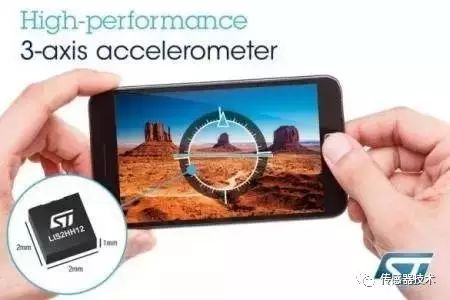
Gravity sensor (G-Sensor)
Through the piezoelectric effect. There is a weight inside the gravity sensor integrated with the piezoelectric sheet, and the horizontal direction is calculated by the magnitude of the voltage generated in two orthogonal directions. When used in mobile phones, it can be used to switch between horizontal and vertical screen orientation.
In some games, gravity sensors can also be used to achieve richer interactive control, such as balance balls and racing games.
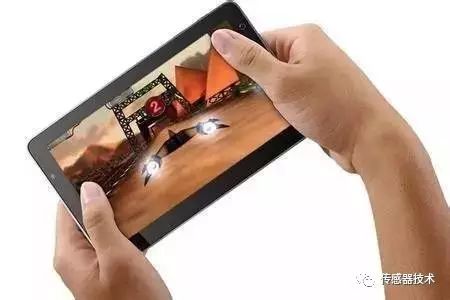
Ambient Light Sensor
The light sensor is similar to the eyes of a mobile phone. The human eye can adjust the light entering the eye in different light environments. The light sensor allows the mobile phone to sense the ambient light intensity and is used to adjust the brightness of the mobile phone screen. And because the screen is usually the most power-consuming part of the mobile phone, the use of light sensors to help adjust the brightness of the screen can further extend the battery life. The light sensor can also be used with other sensors to detect whether the phone is placed in a pocket to prevent accidental touch.
Proximity sensor
It consists of an infrared LED lamp and infrared radiation detector. The distance sensor is located near the earpiece of the mobile phone. When the mobile phone is close to the ear, the system uses the distance sensor to know that the user is on the phone, and then turns off the display screen to prevent the user from affecting the call due to misoperation. The working principle of the distance sensor is that the invisible infrared light emitted by the infrared LED light is reflected by nearby objects and then detected by the infrared radiation light detector. Distance sensors are generally used in conjunction with light sensors.
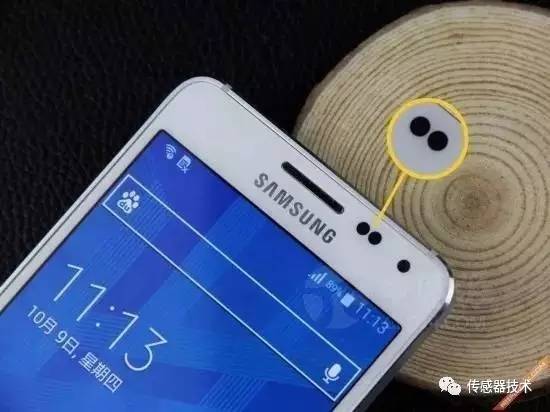
Magnetic (Field) Sensor (Magnetism Sensor)
The magnetic field sensor uses the magnetic resistance to measure the planar magnetic field, thereby detecting the magnetic field strength and direction position. Generally used in common compass or map navigation to help mobile phone users achieve accurate positioning.
Through the magnetic field sensor, you can get the magnetic field strength of the mobile phone in the three directions of x, y, and z. When you rotate the mobile phone until the value in only one direction is not zero, your mobile phone is pointing to the south. Many compass applications on mobile phones use the data from this sensor. At the same time, the specific orientation of the mobile phone in the three-dimensional space can be calculated according to the differences in the magnetic field strength in the three directions.

Gyroscope
The gyroscope can measure the angular velocity along one axis or several axes, which is an ideal technology to supplement the function of the MEMS accelerometer (acceleration sensor). In fact, if the two sensors, accelerometer and gyroscope, are combined, the system designer can track and capture the complete motion in the 3D space, providing a more realistic user experience, accurate navigation system, and other functions for the end user. The "shake" function in mobile phones (for example, you can draw lots by shaking your mobile phone ...), somatosensory technology, and the adjustment and detection of VR angle of view are all applied to the gyroscope.
The gyro sensor is a necessary element for some induction games. It is with this sensor that the interaction of mobile games has undergone a revolutionary change. The user combines the multi-directional operation of the body to feedback the game, not just Just simple keystrokes.
Usually, the standard three-axis gyroscope in the mobile phone can track the displacement changes in 6 directions. The three-axis gyroscope can obtain the angular acceleration of the current mobile phone in the three directions of x, y, and z to detect the rotation direction of the mobile phone. Some of the functions of flipping the phone and answering the phone call are realized by using changes in angular acceleration.
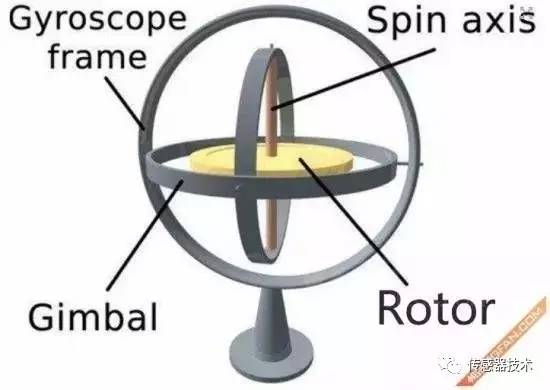
GPS position sensor
There are 24 GPS satellites in a specific orbit above the earth. They will constantly broadcast their position coordinates and time stamps (timestamp, referring to 00:00:00 on January 1, 1970, Greenwich time) to all parts of the world. The total number of seconds until now), the GPS module in the mobile phone is calculated from the instantaneous position of the satellite, and the distance between the mobile phone and the satellite is calculated by the time difference between the timestamp of the satellite's transmission coordinate and the time of reception. It can be used for positioning, speed measurement, distance measurement and navigation.
The main function of the GPS module is to receive the coordinate information of the satellite through the antenna to help the user locate. With the popularization of 4G networks, GPS has been used in more scenarios, such as remote location monitoring with smart hardware, or location search after device loss.
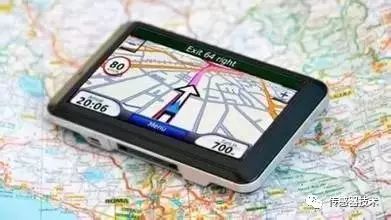
Fingerprint sensor
The current mainstream technology is the capacitive fingerprint sensor, but the ultrasonic fingerprint sensor is also gradually becoming popular. When the capacitive fingerprint sensor acts, the finger is one pole of the capacitor and the other pole is a silicon chip array. Through the micro electric field generated by the human body and the micro current generated between the capacitive sensor, the peak and valley of the fingerprint and the sensor The distance forms the height difference of the capacitance to draw the fingerprint.
The principle of ultrasonic fingerprint sensor is similar, but it will not be interfered by sweat and oil, and the recognition speed is faster. It can be used in mobile phones to unlock, encrypt, pay, etc. It can automatically collect user fingerprints to achieve the effect of protecting privacy, and is usually used as a security measure.
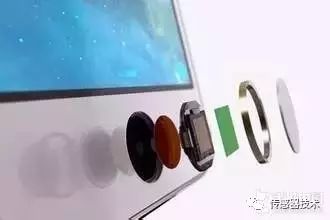
Hall Sensor
The principle of the Hall sensor is the Hall magnetoelectric effect. When the current passes through a conductor in a magnetic field, the magnetic field will exert a force on the electrons in the conductor perpendicular to the direction of movement of the electrons, thus at both ends of the conductor Generate a potential difference.
The main function of the Hall sensor installed on the mobile phone is to use a smart holster (magnetic holster). After buckling the holster, a small window interface will appear in the small window left on the holster to answer the call or read SMS.
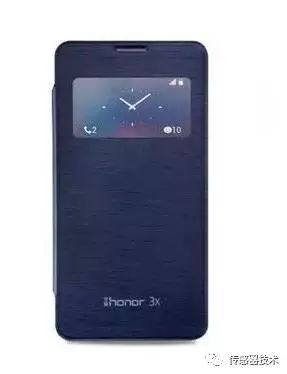
Barometric pressure sensor (barometer, barometer)
Connect the membrane to the transformer or capacitor. When the air pressure changes, it will cause the resistance or capacitance to change, thereby measuring the data of the air pressure. GPS can also be used to measure altitude but there will be an error of about 10 meters. If a barometric pressure sensor is installed, the error can be corrected to about 1 meter, which helps to improve the accuracy of GPS (Global Positioning System)
In addition, in some outdoor applications where the pressure value needs to be measured, a mobile phone equipped with an air pressure sensor can also come in handy. In the iOS health application, you can calculate how many floors you climbed.
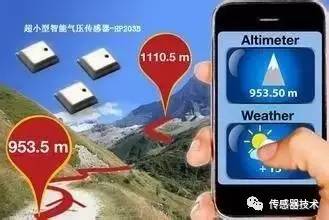
Heart rate sensor
When the finger is irradiated through the high-brightness LED lamp, when the heart presses blood to the capillaries, the brightness (the depth of red light) will change periodically. Then capture these regular changes through the camera, and send the data to the mobile phone for calculation, and then determine the contraction frequency of the heart to get the number of heartbeats per minute.
The user's heart rate data is obtained by detecting the number of pulses per minute of the blood vessel on the user's finger. Heart rate sensors are more common in wear settings.
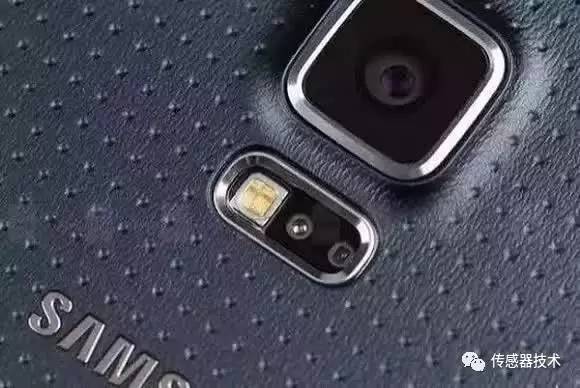
Blood oxygen sensor
Like the heart rate sensor, hemoglobin and oxyhemoglobin in blood have different absorption ratios for red light. Infrared light and red light LED are used to illuminate the finger at the same time, and the absorption spectrum of the reflected light is measured, thereby measuring the blood oxygen content. Can be used for sports or health applications.
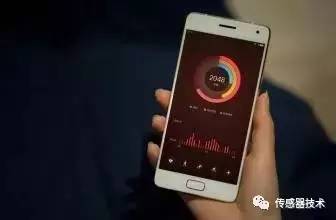
UV sensor
The photoelectric emission effect of some semiconductors, metals or metal compounds will release a large number of electrons under ultraviolet irradiation, and the ultraviolet intensity can be calculated by detecting this discharge effect. The main uses are also in sports and health. Detect radiation levels in the environment.
At present, mobile phones using this sensor are rare, and the stability of the measurement needs to be further observed.
Temperature Sensor
Many smartphones are equipped with temperature sensors, and some have more than one. The difference is that their purpose is to monitor the temperature inside the phone and the battery. If the temperature of a component is found to be too high, the phone will shut down to prevent damage to the phone. In terms of extended functions, the temperature sensor can also detect the temperature change in the outside air, even the user's current body temperature.
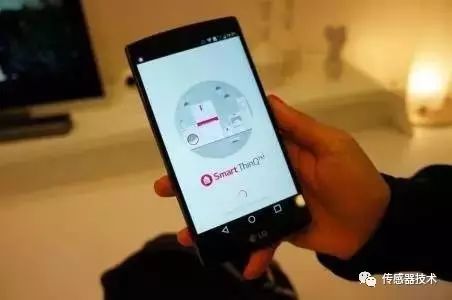
The rapid update of the technical level of today's smartphones is largely due to the innovation of sensor technology in mobile phones. With the integrated application and software support of basic sensors, mobile phone developers have developed many cool mobile phone functions
Super safe 3D ultrasonic fingerprint recognition
The mobile phone integrates the Snapdragon 820 chipset and the Snapdragon Sense ID. The Snapdragon Sense ID uses the latest ultrasonic technology developed by Qualcomm to implement 3D fingerprint recognition.
Fingerprint recognition technology has become the standard equipment of some smart phones. The Qualcomm Snapdragon Sense ID is different from the previous technology. It can work even when there is a small amount of dirt or moisture on the user's finger, and can even penetrate through devices such as glass, aluminum, stainless steel, sapphire, and plastic for identification. This means that mobile phone manufacturers can integrate sensors and devices without having to make the fingerprint recognition unit a button.
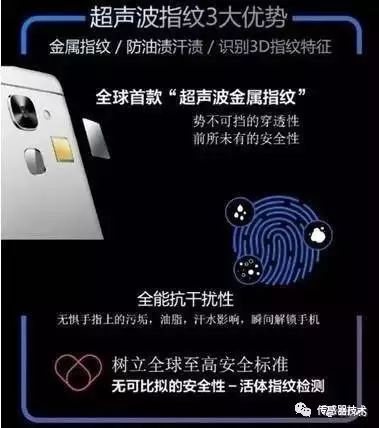
Three advantages of ultrasonic fingerprint recognition technology
Therefore, the ultrasonic fingerprint recognition technology can be put into the screen window of the tablet. In addition, there is a great improvement in security. Ultrasound has long been used in the field of professional biometrics. It can penetrate the epidermis and detect the three-dimensional details of fingerprints, making it difficult for hackers to copy fingerprints and invade users' mobile phones.
Iris recognition mobile phone
The iris of the human eye is more complicated than the fingerprint, so iris recognition using mobile phone unlocking is more secure than fingerprint recognition. Users only need to shoot the eyeballs through the dedicated app, and log the eye iris pattern on the terminal, and then it can be used safely. The iris mobile phone will become a wallet for everyone's payment, a gold card in a bank, a key to open a door, a certificate for customs clearance, and a credential for medical insurance, which opens a new generation of Internet identity authentication.
The mobile phone has a built-in mini iris recognition product, which is composed of an imaging module, a lighting module, and a software algorithm. The built-in camera can scan the user's iris characteristics, and the user only needs to gaze at the screen briefly. The effective recognition distance is 20 ~ 30cm, and the recognition speed reaches 1s. Based on the Jiaotu security chip and Yuanxin dual operating system independently developed by Spreadtrum, the iris recognition solution is optimized from the aspects of system imaging, feature description and matching, security anti-counterfeiting, and user interaction to achieve accurate recognition.
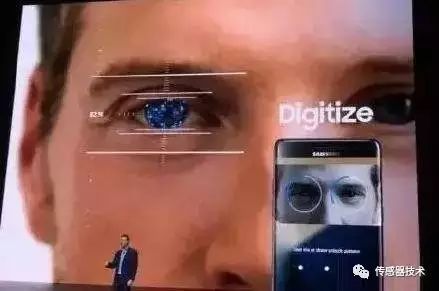
RWB technology creates Zhimei images
The mobile phone with RWB technology is equipped with F1.8 aperture and 6P lens. Compared with the photos taken by previous RGB technology models, the noise reduction ability is increased by 80%, the sensitivity is increased by 40%, and the area is reduced by 23%. The smaller rear camera mirror volume to get more light, the details will perform better in low light.
The commonly used Bayer array image sensor uses RGB (red, green and blue) technology, and the entire sensor will block two thirds of the incident light on average, resulting in great waste. Compared with traditional Bayer array sensors, RWB (red, white and blue) has the biggest improvement in high-sensing shooting performance. Since the green pixels are replaced by white pixels, the effective light intensity received by the sensor is almost doubled, and the high-sensitivity index of RWB has also been significantly improved.
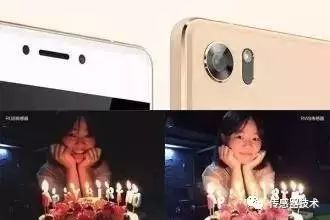
Leica Dual Camera
Leica SUMMARIT series of dual lenses, better brightness and clarity performance, making shooting photos and videos easier. The rear 12 million pixel black and white and color dual camera, the shooting effect can be more than just shooting with two 12 million pixel lenses. In the process of taking pictures, the dual cameras work at the same time, the black and white lens captures the details, and the image is clearer; the color lens captures the color and the color is fuller, and the image synthesis algorithm makes the details and colors more fused, and the pictures taken are lifelike and amazing. At your fingertips.
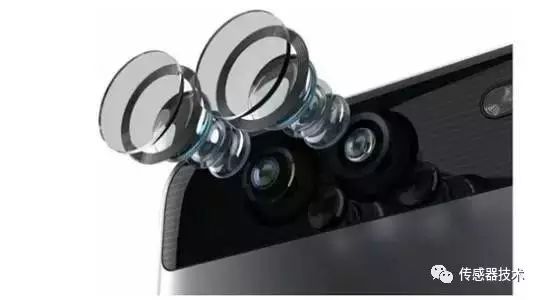
Using hybrid focusing technology that combines laser focusing, deep focusing and contrast focusing, you can take a moment to get a wonderful picture with a clear picture and clear layers.
Comprehensive health exercise monitoring mobile phone
This mobile phone is very important to the health of users. It is a mobile phone equipped with ten professional sensors, which has low power consumption and can enable users to use professional sports applications for 24 hours. In addition, more sensors allow this phone to restore the user's actual movements to the accuracy of the three-step exercise, while also measuring heart rate, blood oxygen and ultraviolet light. With the support of the application algorithm, it will also be able to accurately identify the user's stride and stride frequency.
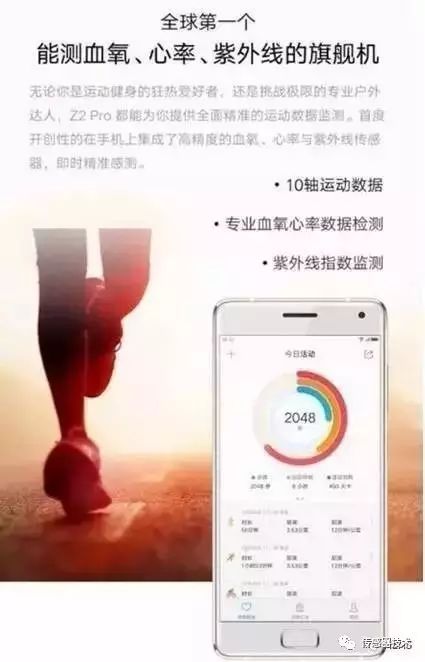
3D visual sensory experience with eye tracking technology
"Full display phone" concept, it is equipped with two cameras in front, one is used for taking pictures like a normal phone, and the other is used for eye tracking, capturing the position of the human eye, and according to your eye position and interpupillary distance, Customize and generate a reasonable viewing angle image that matches the position of the human eye in real time. Whether it is moving left, right, back and forth, you can get a comfortable and clear 3D visual sensory experience throughout.
"One screen, two cores and three shots" is standard for all display phones. One screen is the naked-eye 3D columnar grating LCD screen, users can experience the shock of immersive 3D and VR vision without wearing 3D glasses, and can realize the free switching of 2D / 3D. Dual-core is in addition to the CPU, there is an independent VR visual motion chip to improve 3D / VR rendering speed. The three-shot camera is added to the human eye tracking camera in addition to the conventional camera.
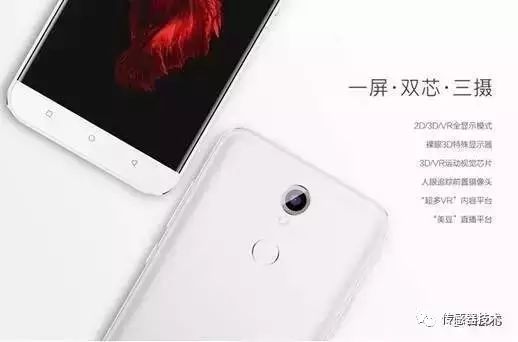
2D / VR free conversion video integrated mobile phone
The mobile phone realizes the fusion of the VR camera and the mobile phone. It is equipped with four cameras, two in front and two in front, which can meet the needs of 360-degree panoramic shooting, achieve 3D stereoscopic effects, and can also freely switch between VR lenses and 2D flat lenses.
The CMOS image sensor pixels in the VR camera module have reached 26 million pixels, using Sony photosensitive devices. The camera module of the ultra-thin VR panoramic lens is only 23.8mm thickest, making it the world's thinnest mobile VR camera module. The VR mobile phone camera uses a single binocular zigzag two-in-one ultra-wide-angle camera module. This VR camera module contains two imaging systems with the same structure. Each imaging system consists of a 200-degree ultra-wide-angle lens and an imaging sensor. The optical path of the lens adopts a 90-degree tortuous dual optical path design. The optical axes of the two cameras are consistent, which greatly reduces the size of the lens and achieves an ultra-thin and ultra-light integrated structure.
The VR camera module also uses image recognition, stitching and other algorithms to fuse the front and rear VR camera views into a sphere, so that the two hemispheres have the same pixel size, color, brightness and other parameters, which is the first in terms of technology.
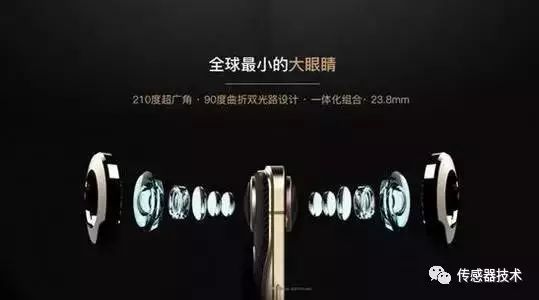
Ultrasonic sensor realizes perfect holographic screen
The biggest advantage that the holographic screen that accounts for 91.3% brings undoubtedly is the visual shock. There are usually three components on the top of a traditional smartphone: a front camera, a proximity sensor based on the principle of infrared ranging, and an earpiece. How do you hide these three components?
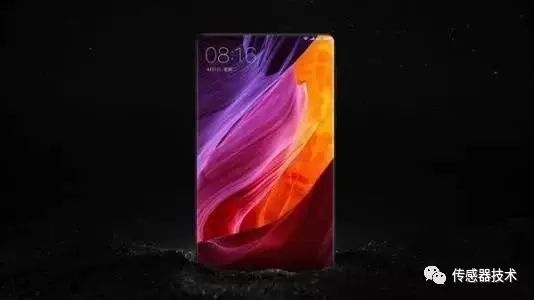
First, the front camera is designed on the bottom right. Secondly, the ceramic acoustic system is used to replace the work of the earpiece.
The traditional proximity sensor based on the principle of infrared ranging is replaced by an ultrasonic ranging sensor. Ultrasonic ranging sensors convert ultrasonic signals into electrical signals. They have the characteristics of high frequency, short wavelength, and low diffraction. They can penetrate liquids and solids. Therefore, the sensor can be hidden inside the screen of the mobile phone to avoid occupying the space outside the screen.
Living fingerprint sensor phone
Using the Finger Finger Recognition System (Live Finger Detection) can effectively prevent fake fingerprints from defrauding the protection of fingerprint recognition, allowing users to rest assured to use Alipay, WeChat payment and other platforms to enjoy the safety and convenience of mobile payment. In addition, the machine's bright screen state can be unlocked as quickly as 0.15 seconds, bringing users a more reliable and smooth user experience.

This finger vein pattern recognition solution was initiated by Huiding Technology in the world and has independent intellectual property rights. This solution integrates the fingerprint recognition sensor and the optical sensor into one module. While performing fingerprint recognition, the authenticity of the user ’s fingerprint information can be verified by the optical sensor to the user ’s biological characteristics such as heart rate and blood, thereby identifying And refuse to forge or clone fake fingerprints to improve payment security. This solution not only innovatively uses single-chip sensors, but also has the advantages of small size, simple packaging process, and simplified module production.
The future development of sensors is certain that it will have a better understanding of the surrounding environment, which means that the types of sensors will be much more than these. The bolder assumption is that the future sensor is not only a sensor, but also has a certain processing capacity. The sensor transmits not only data, but also some intelligent operations and judgments.
In the process of sensors, the higher and higher sensor integration is a common understanding of the entire industry. The higher the integration, the more possibilities are left for sensor expansion, and the equipment space is greatly saved, which is more conducive to mobile devices Towards the development of portability.
I believe that in the foreseeable future, our mobile phones will be more accurate in perception of users, and its applications in the future will be much richer than we think now.
Patch Panel,48 ports patch panel,half U patch panel,patch panel 24 port
NINGBO UONICORE ELECTRONICS CO., LTD , https://www.uonicore.com